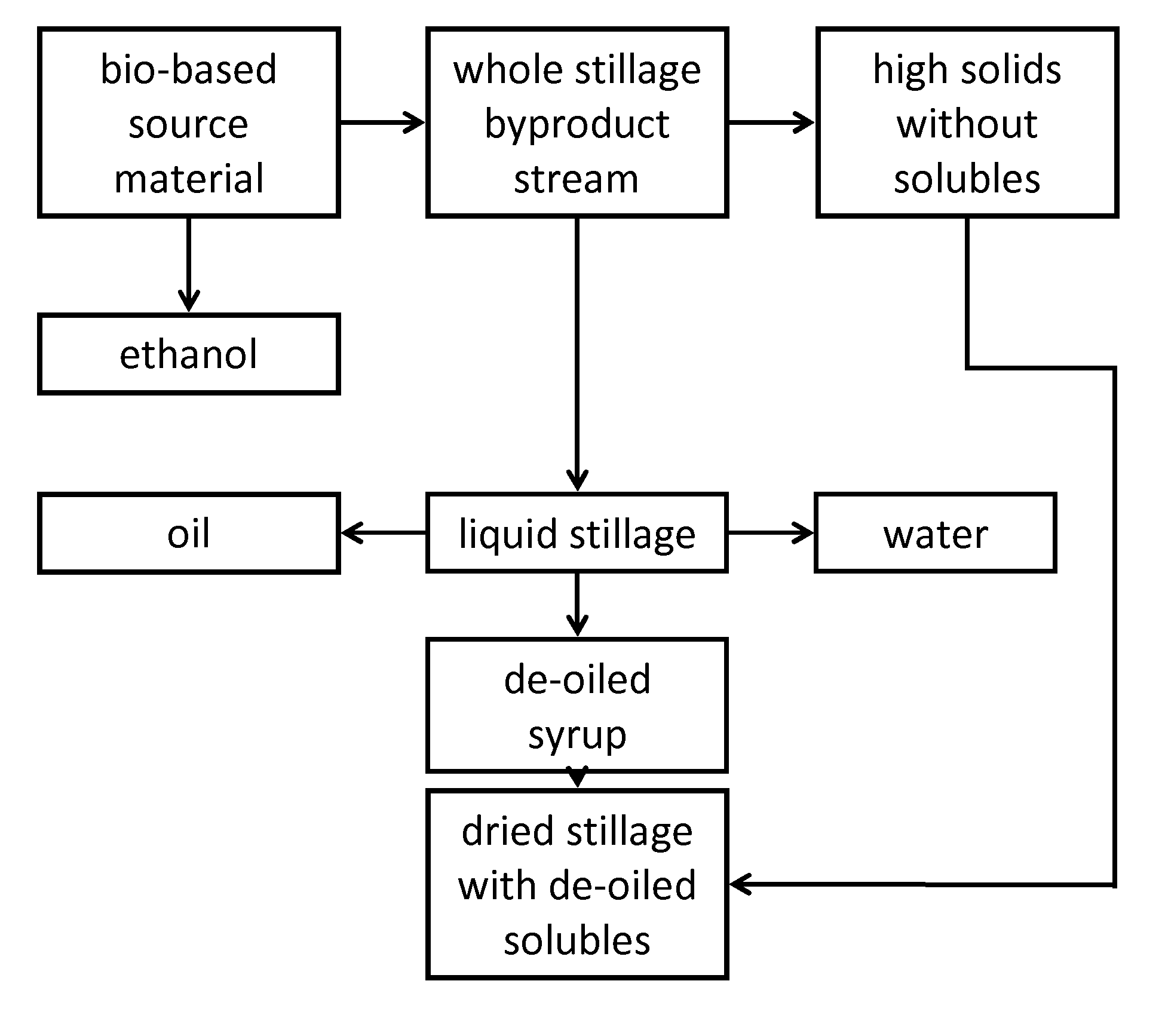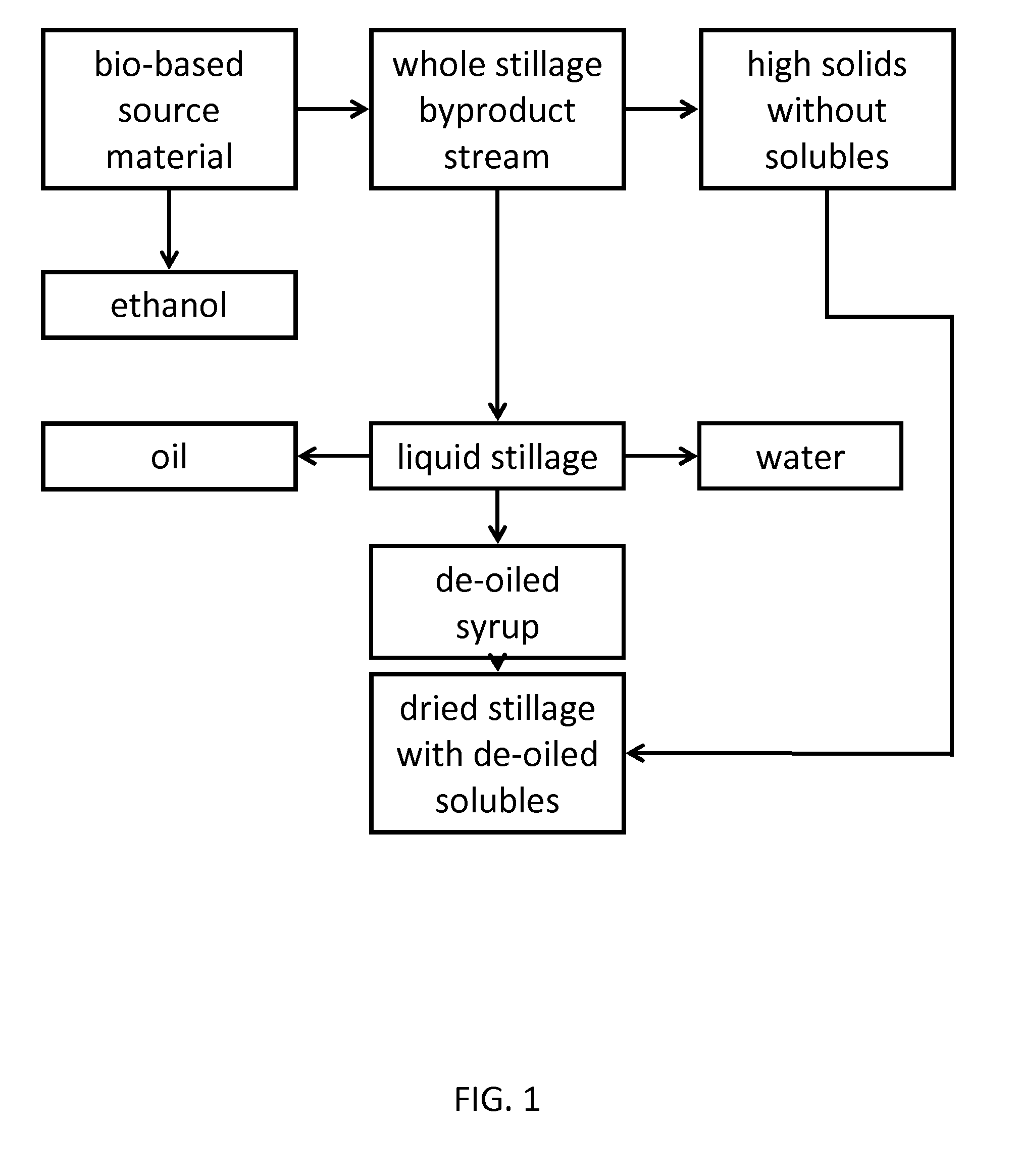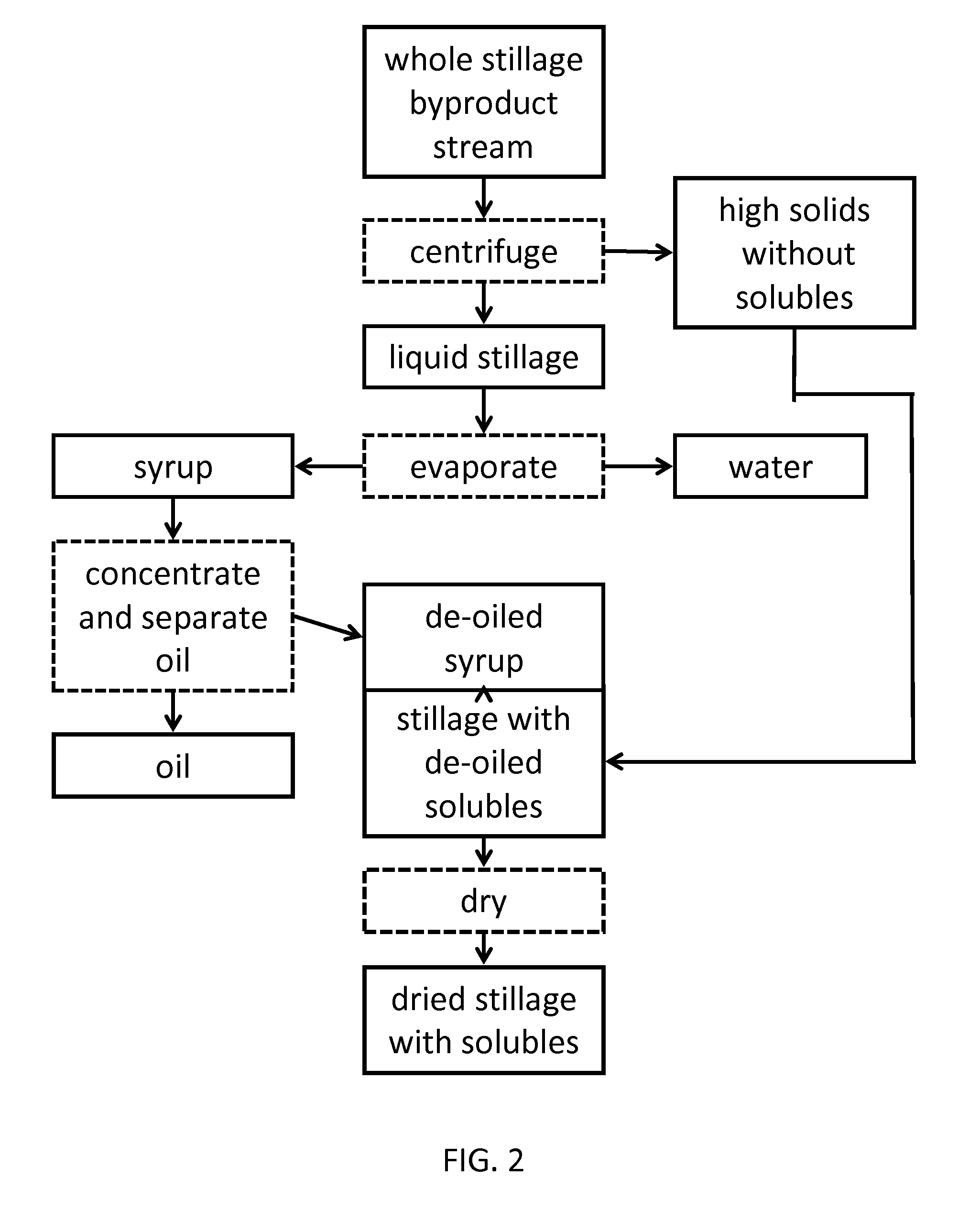Bio-based oil composition and method for producing the same
a bio-based oil and composition technology, applied in the field of plant oil products, can solve the problems of not being fermentable, affecting the production efficiency of livestock, and large quantities of byproducts remaining,
- Summary
- Abstract
- Description
- Claims
- Application Information
AI Technical Summary
Benefits of technology
Problems solved by technology
Method used
Image
Examples
examples
[0035]Table 1 shows a number of commercially available surfactants tested to establish those properties that facilitate an understanding of the factors relating to the selection of a particular surfactant for use within the scope of the present invention.
[0036]
TABLE 1CAS %Trade NameGeneral NameNumberHLBOilAq.OilLumisorb ®Polyoxyethylene (80) 9005-19.40.539.51PSML-80†sorbitan monolaurate64-5Lumisorb ®Polyoxyethylene (20) 9005-1573317.5PSMO- 20†sorbitan monooleate64-5Lumisorb ®Sorbitan monolaurate1338-8.60400SML-K†39-2Lumisorb ®Polyoxyethylene (20) 9005-1153512.5PSTO -20†sorbitan trioleate70-3Span ® 80‡Sorbitan monooleate1338-4.60401543-8Surfonic ®Polyethoxylate (40) of9016-17.80400N-400nonylphenol45-9Surfonic ®Polyethoxylate (30) of9016-17.10400N-300nonylphenol45-9Surfonic ®Polyethoxylate (15) of9016-1563415N-150nonylphenol45-9Surfonic ®Polyethoxylate (9.5) of9016-13.16.533.516N-95nonylphenol45-9Surfonic ®Polyethoxylate (6) of 9016-10.90400N-60nonylphenol45-9Surfonic ®Polyethoxylate ...
PUM
 Login to View More
Login to View More Abstract
Description
Claims
Application Information
 Login to View More
Login to View More - R&D
- Intellectual Property
- Life Sciences
- Materials
- Tech Scout
- Unparalleled Data Quality
- Higher Quality Content
- 60% Fewer Hallucinations
Browse by: Latest US Patents, China's latest patents, Technical Efficacy Thesaurus, Application Domain, Technology Topic, Popular Technical Reports.
© 2025 PatSnap. All rights reserved.Legal|Privacy policy|Modern Slavery Act Transparency Statement|Sitemap|About US| Contact US: help@patsnap.com



